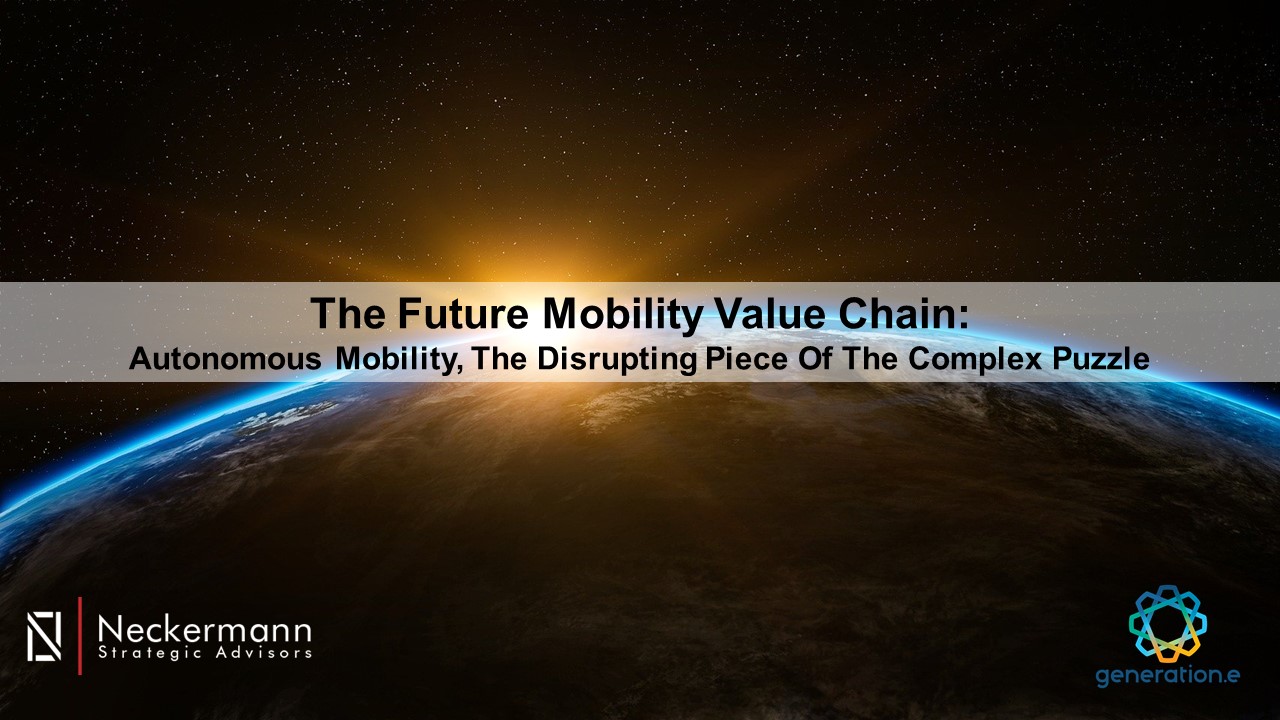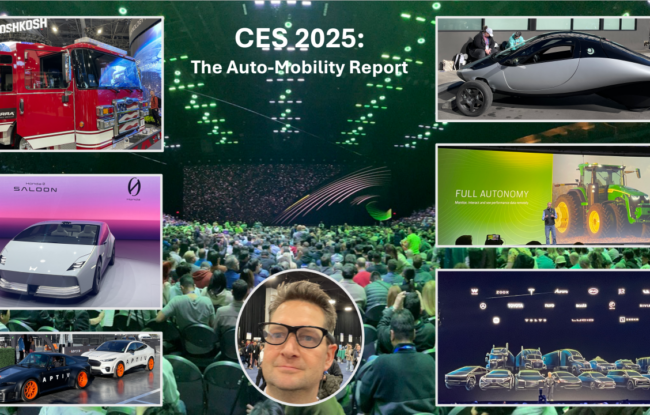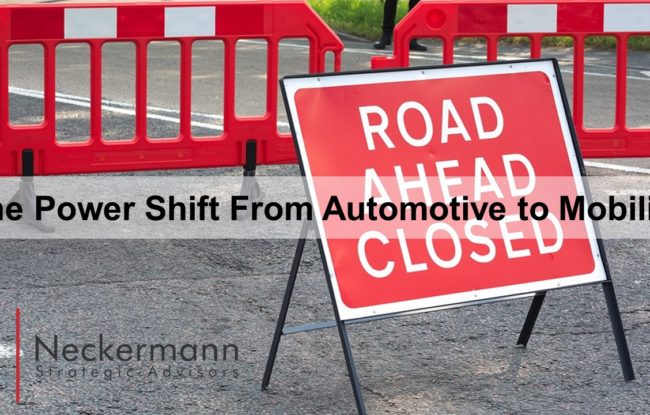This article was first published on the 19th of May 2020 here
The first driverless trials – after the move from horse-carriages – takes us back to almost a century ago. In 1925, Houdina Radio Control presented its remotely controlled “Chandler” on Broadway NYC.
While this first attempt was not a great success (the car crashed into a car full of reporters and photographers), it likely marked the beginning of one of the biggest dreams humans have ever had: commuting with autonomous vehicles (AV).
For most of the last 100 years, it’s fair to admit that not a lot has happened in the development of such technology. Yet, the last decade has seen an incredible number of breakthroughs and new companies committed to making autonomous mobility a reality (over 60 companies have licenses for autonomous trials in California alone). This acceleration goes together with the transition from the traditional automotive industry into a new, more complex mobility ecosystem. Generation.e understands how important a holistic comprehension of the mobility value chain is to capturing the right challenges that autonomous vehicles are facing. The objective during the Smarter Mobility Europe LIVE is to leverage this expertise, to ask the right questions to the speakers, and go beyond what has happened to focus on what will happen in a post-epidemic world.
THE MOBILITY VALUE CHAIN
The traditional automotive value chain is outdated. The simple and condensed value-chain, with its limited number of stakeholders, is now being replaced by a mobility value-chain much more complex and diversified, in which people are at its core and not just customers.
Within automotive, stakeholders refer to a “CASE” framework (Connected, Autonomous, Shared and Electric, sometimes also “ACES”). It relates to some concrete outputs of the Mobility Revolution, as they pertain to their industry.
CASE is useful for the automobile industry to understand what is happening, but it is limited in scope. At Neckermann Strategic Advisors (NSA), since 2013, we have believed in the birth of a new industry, as a result of the Mobility Revolution, with three “zeroes” as the ultimate target: zero emissions, zero accidents, and zero ownership. We have developed a new value-chain for the age of shared, autonomous mobility-as-a-service. The same, linear model can also be interpreted as a circular, interconnected model, wherein all stakeholders interact.
Despite all enthusiasm, a recent study from Neckermann Strategic Advisors found that end-user adoption of autonomous technologies and the shift from private to shared mobility might be bigger barriers to overcome than expected. The combination of user behaviour and technology is an essential piece of the mobility puzzle to make the three zeroes framework a reality. These zeroes are probably priceless. Globally each year congestion costs $500 bn, pollution kills over 4 million people and approximately 150 people die every hour due to road accidents.
Investors have understood the importance of these challenges that new modes of transport are addressing and actively finance corporates and startups around the world since 2010.
THE AUTONOMOUS MOBILITY VALUE CHAIN
Deeper into the mobility value chain, there’s a focus on autonomous vehicles. While for some, this mode of transport might still seem a futuristic and niche industry, a recent global mapping from NSA found more than 700+ companies developing automated solutions. They have collectively received over $112 bn (~€104 bn) in funding only for these solutions since 2010.
Based on aggregated analyses, NSA estimates that the autonomous value chain could be worth almost a trillion euros by 2030, mainly driven by the tech developments, the operation of autonomous mobility services and the management of the assets (vehicles, shuttles, buses, …).
There are promising opportunities across this autonomous value chain, but it is up to the stakeholders, sometimes from industries completely different than the mobility sector, to take advantage of favourable new spaces. For example, Nvidia, who 10 years ago was valued mostly for its gaming computer chips. Today, the US company powers a significant number of AVs and has a market capitalisation six times as high as Daimler’s.[1]
There are powerful economic incentives to accelerate the development of automated vehicles. The low-value time we spend behind a steering wheel could suddenly be worth much more. What would you do if a robot drove you from your initial point to your destination? In its study, “Being Driven”, NSA found that people see three potential applications fort autonomous transport: medical transportation, shopping, and entertainment/relaxation. Different industries such as retail or hotel are already seeing opportunities to leverage a robot car as an additional service or communication channel. Just for long-distance trips as per picture 5, there could be a market opportunity of over $150 bn (€140 bn) under the hypothesis that the value of one’s time is $5 (€4.5) per hour.
Some mobility operators (ridesharing, carpooling, bus on demand, …) are expecting robot drivers to be the key to profitability. A study from the UK Government Office for Science found that on average the driver represents 40% of the cost of the service.[2] Replacing the driver could cut the operational costs enough to enable profitability. This calculation is, of course, subject to the final cost of an AV, or at least its tech stack. Today, except for some vague assumptions, nobody knows what this will finally amount to. While currently, a shuttle costs several hundreds of thousands of euros, some forecasts predict that the automation of a car could add just 10% to the vehicle cost.
Others even suggest that autonomous technologies could turn mobility services into a commodity, up to a point that the service would be free (or at least included into a subscription). Would an Amazon car, available for Prime members, or a Netflix shuttle be an impossible idea?
WHAT’S NEXT
For the immediate moment, autonomous testing is on hold, at least on the passenger side. Automated transportation of goods, on the other hand, is driving development at full speed. Drones, autonomous vans and robot pods are just examples of technologies for which projects have been accelerated thanks to the global lockdown. This topic will be addressed in our last article about logistics.
Overall, coronavirus is an accelerator of trends. Probably for the first time since the beginning of the automotive revolution 120 years ago, people can experience cities with less congestion and pollution, and can understand what could be the enormous benefits of electrification, along with alternate modes of transport. In this near-future world we would like to onboard you during the Smarter Mobility Europe LIVE. Together with the experts, speakers and panellists, we will try to understand how can we leverage the expertise gathered for the last decade to turn this experience into meaningful and impactful outcomes in a post-COVID-19 environment.
During Smarter Mobility Europe LIVE on 1-3 July, we will build upon these recent game-changing transformations to go beyond their immediate results. Through a series of case study presentations, technology and solution demos, looking to the future panels, and Chatham House roundtables, we will advance the understanding of which barriers need to be overcome, and which opportunities can be leveraged in order to develop ever more sustainable mobility experiences. Incredible progress is already being made, it’s important that we are able to share knowledge and of success and failure, inspire improved ideas, and ensure a plan is in place for the new Europe we are ‘cycling’ towards.



